Simulation Standard
Silvaco面向半导体工艺和器件仿真工程师推出的技术刊物
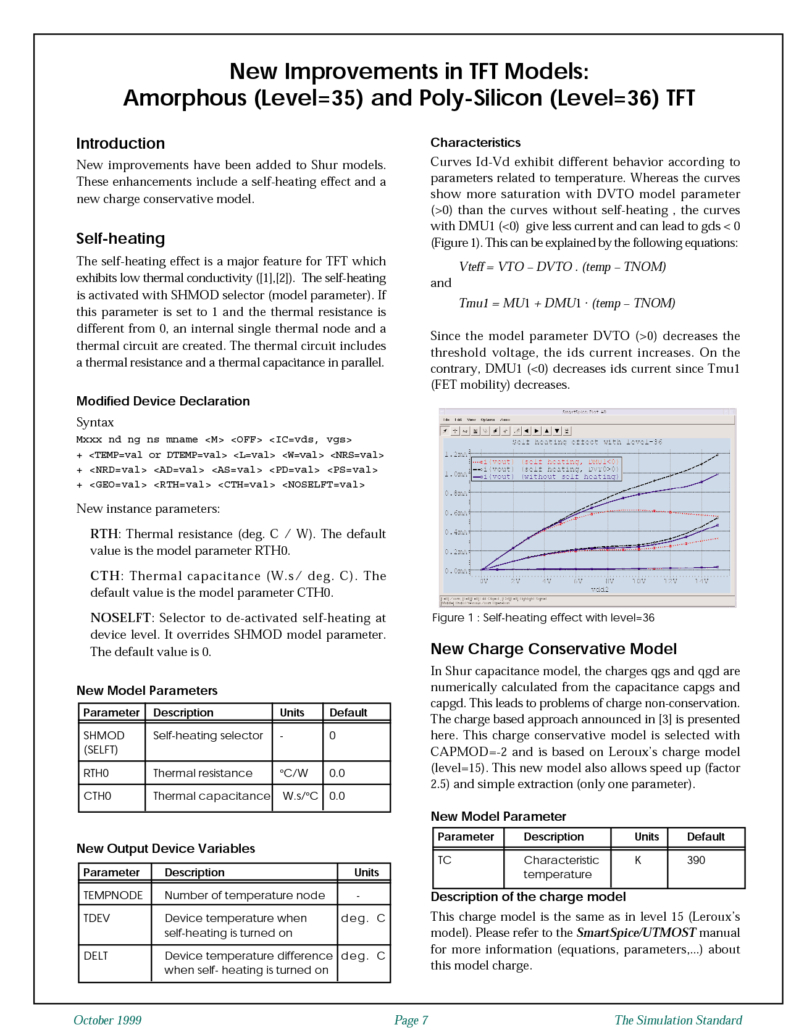
New Improvements in TFT Models: Amorphous (Level=35) and Poly-Silicon (Level=36) TFT
New improvements have been added to Shur models. These enhancements include a self-heating effect and a new charge conservative model.
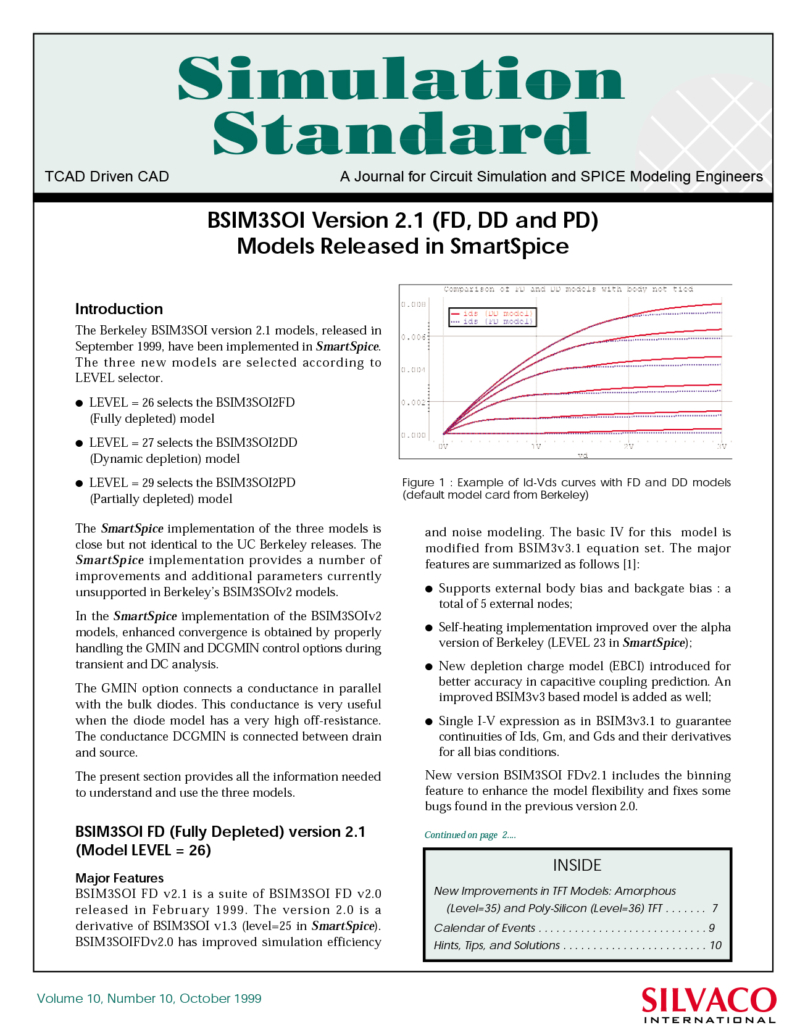
BSIM3SOI Version 2.1 (FD, DD and PD) Models Released in SmartSpice
The Berkeley BSIM3SOI version 2.1 models, released in September 1999, have been implemented in SmartSpice. The three new models are selected according to LEVEL selector.
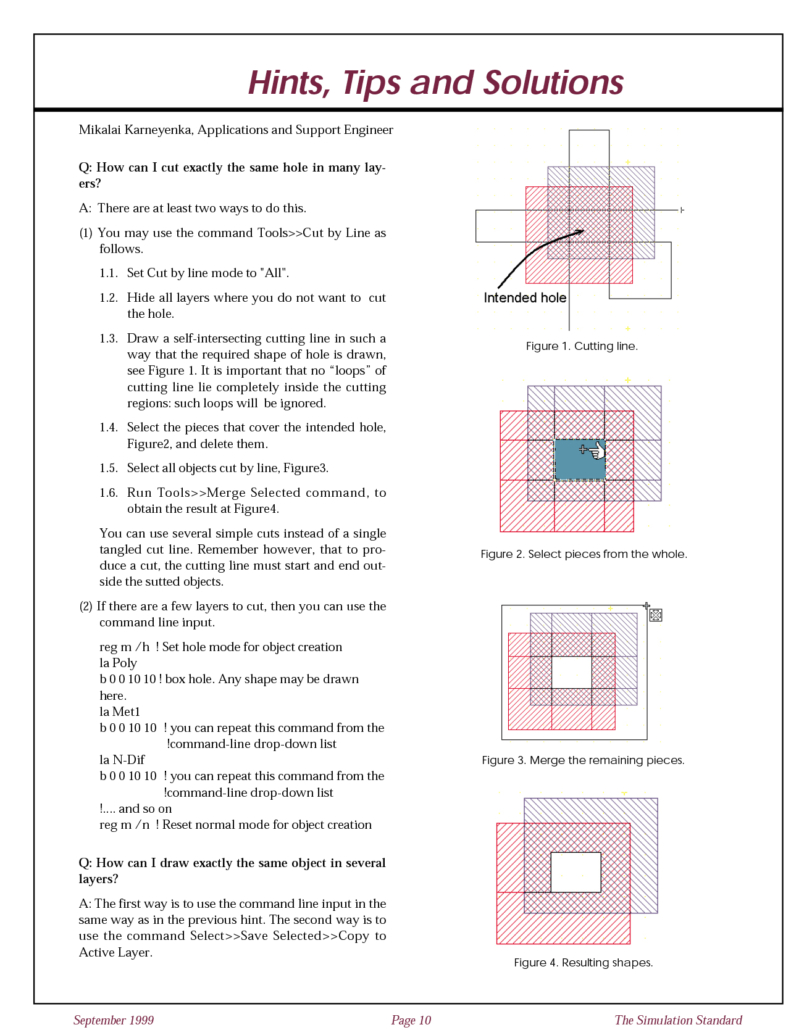
Hints & Tips September 1999
Q: How can I cut exactly the same hole in many layers? A: There are at least two ways to do this. (1) You may use the command Tools>>Cut by Line as follows.
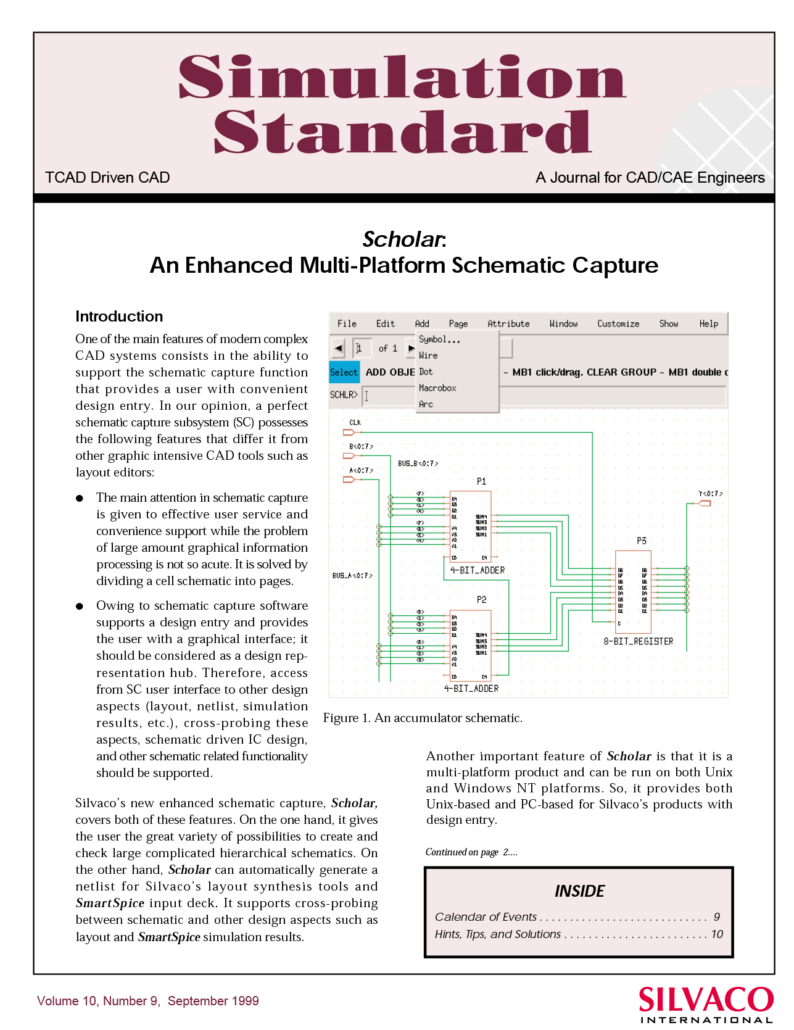
Scholar: An Enhanced Multi-Platform Schematic Capture
One of the main features of modern complex CAD systems consists in the ability to support the schematic capture function that provides a user with convenient design entry. In our opinion, a perfect schematic capture subsystem (SC) possesses the following features that differ it from other graphic intensive CAD tools such as layout editors:
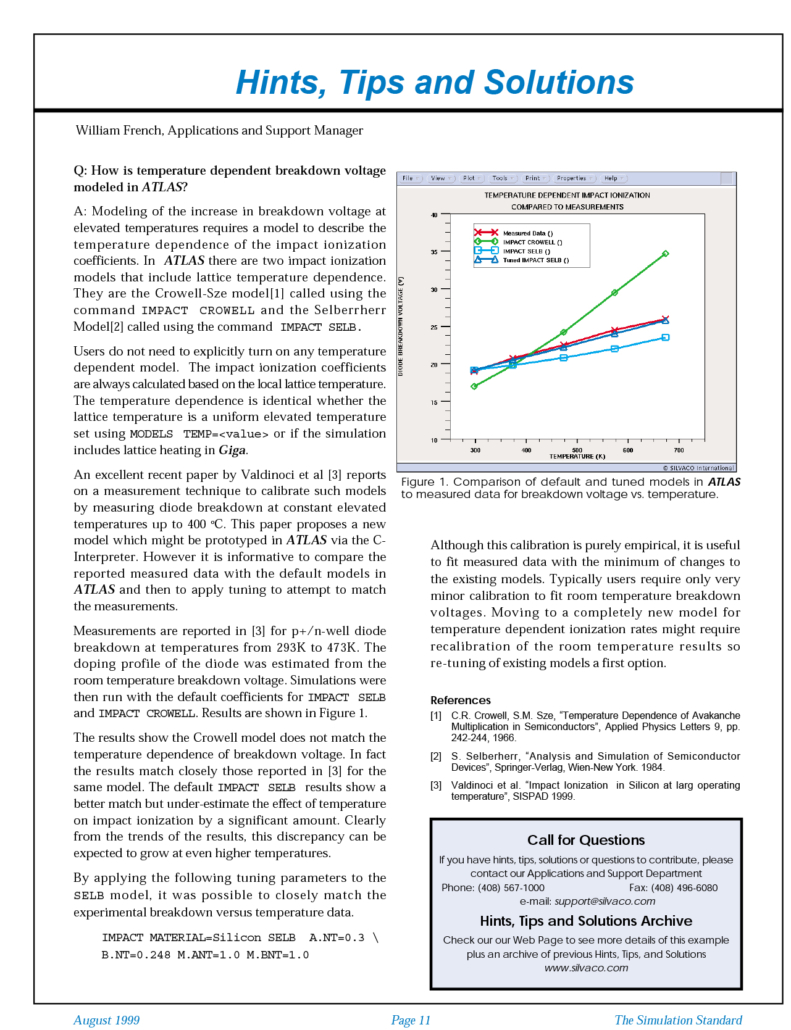
Hints & Tips August 1999
A: Modeling of the increase in breakdown voltage at elevated temperatures requires a model to describe the temperature dependence of the impact ionization coefficients. In ATLAS there are two impact ionization models that include lattice temperature dependence. They are the Crowell-Sze model[1] called using the command IMPACT CROWELL and the Selberrherr Model[2] called using the command IMPACT SELB.
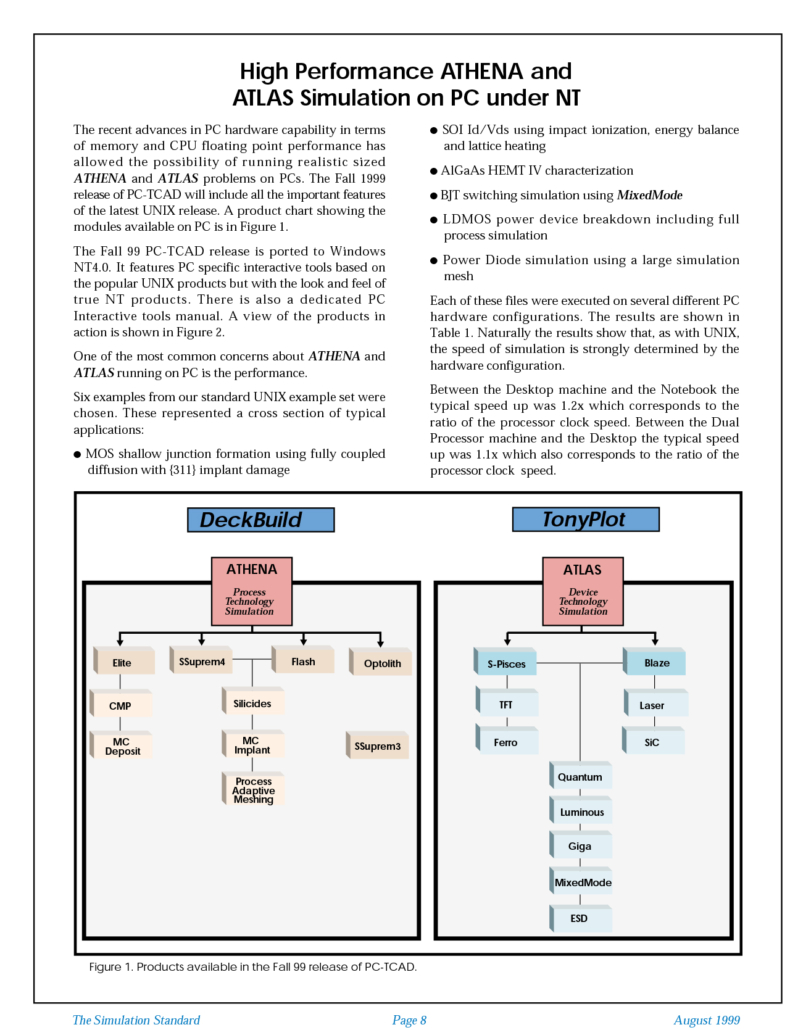
High Performance ATHENA and ATLAS Simulation on PC under NT
The recent advances in PC hardware capability in terms of memory and CPU floating point performance has allowed the possibility of running realistic sized ATHENA and ATLAS problems on PCs. The Fall 1999 release of PC-TCAD will include all the important features of the latest UNIX release. A product chart showing the modules available on PC is in Figure 1.

